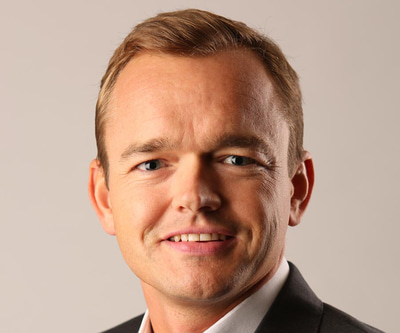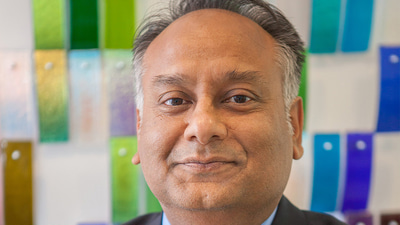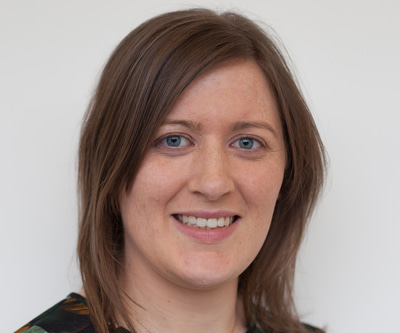- OT
- Industry
- Contact lenses
- The impact of COVID-19 and the path ahead
In conversation with Johnson & Johnson Vision
The impact of COVID-19 and the path ahead
Times are tough for practices, as COVID-19 alters the way contact lens services can be delivered. OT speaks to Johnson & Johnson Vision experts and optometrists for their reflections on the way forward

14 October 2020
OT: What impact has COVID-19 had on the contact lens and patient care sector?
Jakob Sveen, managing director Europe & general manager UK and Ireland for Johnson & Johnson Vision (JS): COVID-19 has had a significant impact on the eye health industry as a whole, and it is really only now that we are seeing the early stages of recovery. However, it has been inspiring and humbling to see how the healthcare community has been continuously on the front line to serve patients in need. The resilience that optometry professionals have shown is remarkable.
For contact lenses specifically during COVID-19, with travel restrictions and limited social interaction, the reduction in typical usage occasions has resulted in a decrease in contact lens wear. A recent survey we’ve conducted has shown that 43% of patients say they are wearing contact lenses less than before lockdown. The good news is that 89% say they are likely to return to their normal contact lens wear.

Kamlesh Chauhan, director of professional affairs, UK, Ireland, Nordics and DACH for Johnson & Johnson Vision (KC): One of the things that has stood out to me is seeing examples of how eye care professionals (ECPs) have been supporting patients with essential and emergency care. What the industry as a whole has achieved, in what has been a challenging, unforeseen and unprecedented event, has been impressive.
This applies not just to those dealing with something that might be seen as very severe in terms of a case, but also simple things, such as getting spectacles to an elderly person who might have a fall without them. All of those things, and the care being given over the past few months, make such a huge impact on patients’ lives.
OT: How have you been working to support practitioners over the past few months? How will this support evolve?
JS: At Johnson & Johnson, our credo lives in everything we do, and is something we heavily rely on in times of crisis. The principle is to support and make sure patients are looked after through the services healthcare professionals provide. So for us it was natural that our first priority when COVID-19 hit was to reach out to our customers to understand how we could best support them and their practice. And as we come out of lockdown, we want to make sure ECPs haven’t lost any confidence, and feel as supported as possible.
KC: Throughout lockdown we quickly moved to provide a number of resources to ECPs. We managed to train more than 2500 practitioners in a matter of a few weeks, offering webinars and covering everything from reassurance on COVID-19 and contact lenses to topics that aren’t just around the current situation, such as dry eye and myopia management. It’s been amazing how eager ECPs are to learn – the eagerness with which they came on and wanted to learn was great.

The other group is the staff in practices: optical assistants and advisers. They clearly have a great role to play in starting up the businesses again and in the impact they had as well. We've supported over 1200 people through webinars.
We’ve also been helping people in how they live through COVID-19 in terms of managing personal wellbeing. We partner with Mental Health UK as part of our corporate social responsibility, so we wanted to make sure we were holistic in the support we gave.
Another area we are passionate about is supporting younger optometrists. A few years ago we started the Success Through Education Programme (STEP), through which we support students over a four-year period. We take about 400 on each year. We connected with over 500 of these students over the past few months. For them this has been a really challenging time because they didn’t know when their exams would be or when they could start their jobs. We’re working with the College to find out exactly what is happening, and we are also working with employers to see how they plan to phase the return of these individuals.
We have given three grants for research through the STEP initiative so students can continue to do research.
Currently our focus is shifting more to providing workshops which focus on how practitioners can welcome patients back into their practice. Part of that will be reassuring patients that it is safe to continue contact lens wear.
OT: For some practices, contact lens schemes have been a regular source of income over the past few months. How have you supported practices in this, and how will you be supporting them to bring patients back to practice?
What we saw with the lockdown restrictions on stores was a need to change how we engaged with patients who previously would come in for a personal interaction with their ECP. Business owners did an impressive job of quickly setting up home delivery options while finding ways to maintain a strong relationship with patients. I think this will be a trend going forward, looking at how we support our customers, especially small business owners, to continue to deliver convenient support to patients.
That said, with the opening of the stores and restrictions easing, human interaction is always important. Rekindling that from a professional perspective is going to be important, and something our professional affairs team is supporting ECPs with through webinars and other resources.
OT: How do you hope the services J&J has provided through lockdown have supported optometrists through the pandemic and into the ‘new normal’?
KC: We have all learned new ways of working. It has even been surprising how effective and potentially enjoyable it can be. The convenience for ECPs of being able to consult from home has been a surprising benefit. I think we want to amalgamate the new way of doing things with how we communicate face to face. This element of learning new ways of working is something we can see across all healthcare industries.
The programmes we are currently running are focused on how to get patients back into the practice safely, protecting staff and patients while generating positive results. We know if a practice isn’t profitable, it can’t provide the service it needs to. So from that perspective we are looking at how we can help ECPs innovate in how they set up the infrastructure for their practices.
OT: What is your key priority for the months ahead?
JS: Our priority continues to be supporting ECPs as practitioners and business owners. We are looking at ways to support ECPs as we re-open from lockdown and engage more patients.
Our role at Johnson & Johnson Vision is one of support and finding new ways to give it, in what remains quite an underserved needs state in eye health. From a contact lens perspective, it is only really about a 15% penetration.
When we look towards the future, hopefully sooner or later we’ll be looking towards growth for this category. There’s still a lot we can do.
COVID-19 has galvanised us as an industry to come together to support patients collectively. Tackling that engagement and collaborating is exciting and is an opportunity to look at what we managed to do through COVID-19 and what we can do as an industry going forwards.
OT: As a practitioner, what is your reflection on this time?
KC: One thing COVID-19 has really highlighted for me is the capability and capacity for eye care professionals working in the community and what they can do.
Seeing what ECPs have been able to do over COVID-19 has, in many ways, helped people understand how important they are. With papers now coming out showing there is little difference in how an eye health condition is managed inside the hospital environment compared to High Street practice environments, you can see there is a strong opportunity for optometry to now be put on a pedestal to show what it can do.
OT: Why should ECPs be engaging contact lens patients proactively post lockdown?
JS: Engaging with contact lens patients is a good way to help protect business for the long-term. We know from surveys that 89% of patients are likely to return to normal wear as they come out of lockdown, so this is an opportunity to encourage contact lens usage, helping patients recall the benefits of doing so.
From experience we know contact lens patients are valuable because they provide sustained business revenue, with a higher spend on vision care as they wear both glasses and contact lenses.
KC: The sooner an ECP engages contact lens wearers who may have stopped contact lens wear through lockdown, there is a higher chance of them returning as a customer. We are working on support resources for this, including new options for engagement as we know now that things like remote consultations are effective.
The practice view

The past few months have been a challenge but very rewarding. I have learnt a lot as a practitioner and the experience has reinforced some of those skills we use as an optometrist. This was mostly through remote care over the phone, triaging and consulting on symptoms, hearing concerns or just reassuring patients who had broken their glasses. We also saw the occasional patient face-to-face for urgent or essential care.
I think patients were initially concerned over whether contact lens wear was safe. Very quickly, guidance and papers were released to say that the risk of transmission through tears is low and it was reassuring to have that scientific evidence as back-up. The guidance from associations helped to address patient concerns. This also provided us with an opportunity to advocate for following stringent hygiene and contact lens care procedures, as well as a chance to remind patients not to wear their contact lenses if they feel unwell.
People’s lifestyles have changed. Most contact lens wearers have continued as normal, but we have noticed that some occasional users are now wearing contact lenses more often. Where they might have worn them a couple of times a week to exercise, for example, they are now doing so more often.
I think we’re seeing a resurgence in interest in contact lenses. With the need to wear masks in public and use of personal protective equipment in the workplace, I think people are seeing contact lenses as having functional benefits, as opposed to purely thinking of them as a lifestyle choice. I think people have been taking a step back and considering their health priorities.
Across practitioners and businesses, locally and nationally, there has been a motivation to look after the eye care needs of everyone
This has been a massive period of self-reflection for me as an optometrist. I think it had been very easy to get into a routine to some extent, with fully booked clinics and seeing patients every day. When lockdown first happened, everything was stripped back to what was essential to diagnose and decide the best course of action for the patient. I think it has given me more clinical autonomy.
It has been inspiring to see how the profession has come together. Across practitioners and businesses, locally and nationally, there has been a motivation to look after the eye care needs of everyone. There was a real sense of collaborative working between practitioners in terms of keeping in regular contact, sharing tools, PPE and knowledge, and looking out for one another. It has also given us the opportunity to educate the public, on eye health concerns, but also what optometrists can do.

The practice was closed for everything except urgent and essential services. As I don't live very near the practice, one of the other optometrists in the team was on call for urgent care. I was working remotely, triaging and providing contact lens consultations over the telephone. If a patient wanted to order a supply of contact lenses and their aftercare was due, I would speak to them and carry out a full symptoms and history, ensuring that everything was fine and they were happy with their vision, comfort and wearing time.
Our contact lens direct debit scheme absolutely helped the practice through the lockdown. We have a lot of patients on direct debit and at a time when people weren't coming in and buying glasses, the fact that we had a guaranteed income every month helped us survive.
We only had two patients cancel their direct debit during lockdown, and we have hundreds of people on the scheme. A few patients have said they were wearing their contact lenses less as they weren't going out so much. I think in a lot of cases this is because people were working from home and didn’t feel the need to get as dressed up as they might have if they were going into the office. So we've seen a little reduction in wear because of the change in lifestyle. On the other hand, we have had some patients who have been wearing their lenses more, especially if they had issues with their glasses steaming up whilst wearing face coverings. It is a bit of a balance.
There is a lot we have been doing differently that we are going to carry on doing. One of the biggest areas is the telephone consultation. If someone has had an issue with their eyes, for example, after their appointment we would have normally booked them back in a week later to make sure that everything was fine. Currently you need to find a time to see them when there are fewer people in the practice, to maintain social distancing, and clean down afterwards. If they are coming to see us just for that reason, why are we not doing that over the telephone or via Zoom?
We have a lot of patients on direct debit and at a time when people weren't coming in and buying glasses, the fact that we had a guaranteed income every month helped us survive
I think there are a lot of follow-ups you can do remotely. For example, if you fit someone with contact lenses, why not do the six months’ aftercare remotely, only bringing the patient into the practice if necessary? Contact lenses now are the best they’ve ever been and if, at the end of their aftercare, everything is great, it is likely that it still will be in six months’ time.
Advertisement


Comments (0)
You must be logged in to join the discussion. Log in